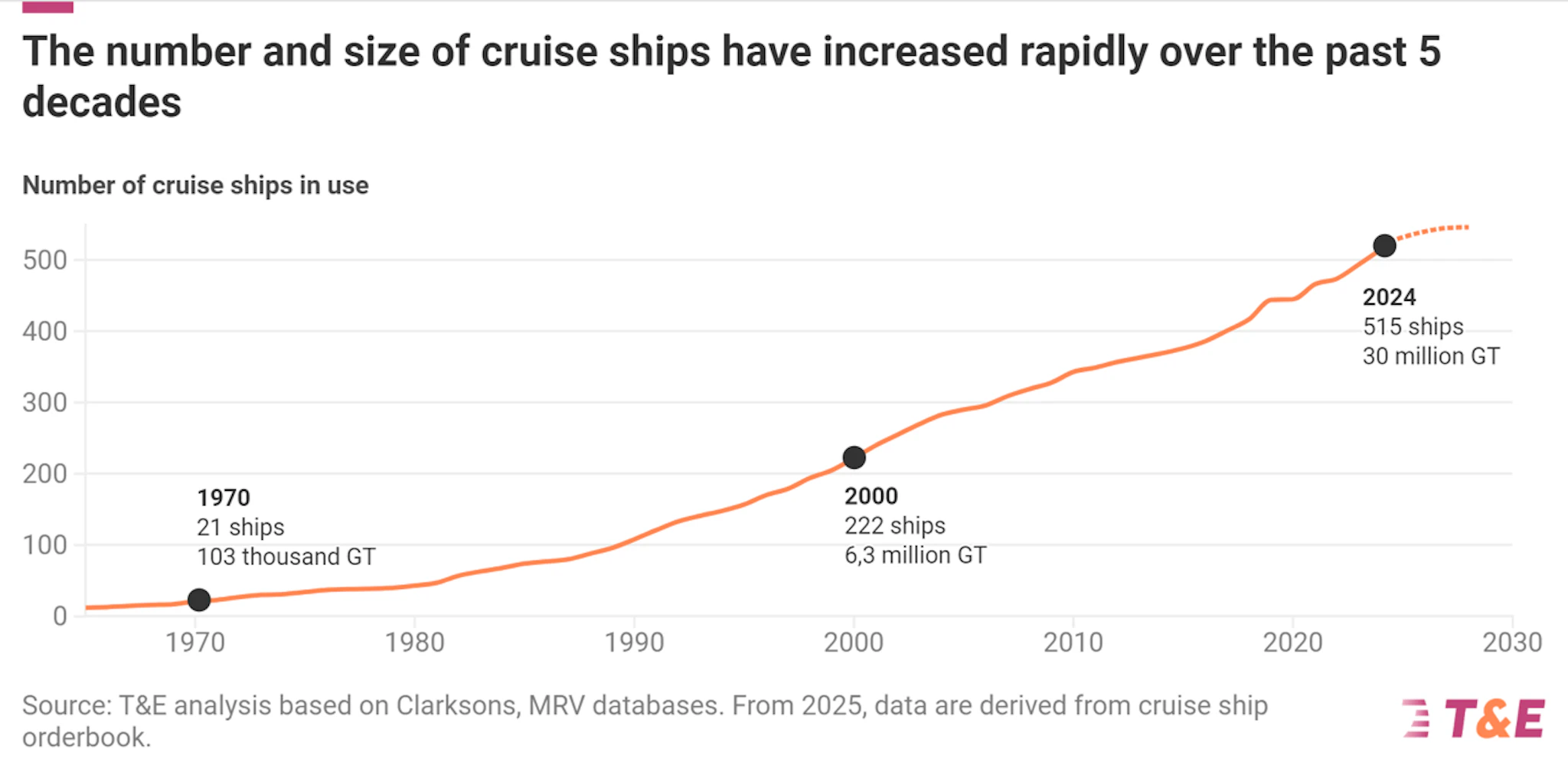https://www.lifegate.it/navi-da-crociera-dimensioni-numero
- |
The dimensions of the large cruise ships have doubled compared to 2000.With a dynamic that appears crazy from a climate and environmental point of view, oriented solely towards maximizing profits for the companies that manage them.The one to report it a relationship published by the non-governmental organization Transport & Environment (T&E), according to which, if this trend were to continue, in 2050 you could get to have it ships eight times the size of the Titanic.
In 1970 there were only 21 cruise ships, today there are 515
The multiplication of number of existing cruise ships, combined with the increase in their size, entails an extraordinarily heavy environmental cost.Especially in a sector that has been spared for too long regulations sufficiently stringent.Numerous analyzes carried out in recent years have shown alarming data in numerous gods ports in which these boats remain moored for hours with engines running:Civitavecchia, Palma de Mallorca, Marseille, Venice, Barcelona, Genoa, Livorno, La Spezia, Savona and Ancona, just to name a few.
This followed, unsurprisingly, the trend of business of cruises, which it has recorded in the last fifty years a continuous rise.Suffice it to say that in 1970 there were only 21 ships, compared to 515 today.It is therefore not surprising that the CO2 emissions resulting from these vessels, have grown by over 20 percent only in the very short period from 2019 to 2022.
“Sector emissions are becoming uncontrollable”
“Today's cruise ships are the real deal monsters of the seas – he commented Fanny Pointet, maritime transport manager at T&E -.By comparison, the Titanic was a small fishing vessel.The question is how far we will get, considering that in the tourism sector, cruises are the fastest growing sector, with emissions that are becoming uncontrollable”.

In January this year, it was launched the largest ship ever built, the Icon of the seas.A floating madness with 40 restaurants, seven swimming pools and capable of accommodating 7,600 people divided into eight "neighborhoods".The promoters of these initiatives underline how the vessel is powered by liquefied natural gas and not from conventional fuels.But if it is true that it emits less carbon dioxide, it releases gas into the atmosphere methane, which has climate-altering power tens of times higher compared to CO2.
The only solution is to impose strict rules on the cruise ship industry
The truth is that there is only one possible solution to limit the catastrophic impact that the cruise sector has on the Earth's climate:theimpose strict rules not just about fuels, but also on filters to limit the emissions, on the hours of parking in ports, on the total of nautical miles viable annuals and, of course, sui accessible places (protecting the most vulnerable ones).
“Cruising is an activity of luxury and operators must assume their responsibilities in terms of climate impact.Otherwise they will be perceived as unwelcome elements in an increasing number of ports,” adds Pointet.Especially cruise ships are still today incomprehensible exempt from taxes on fuels and from the majority of taxes and business and consumption taxes, compared to other methods of transport.A fee of would be enough 50 euros on each ticket to guarantee revenue into the coffers of the states equal to 1.6 billion euros per year.
